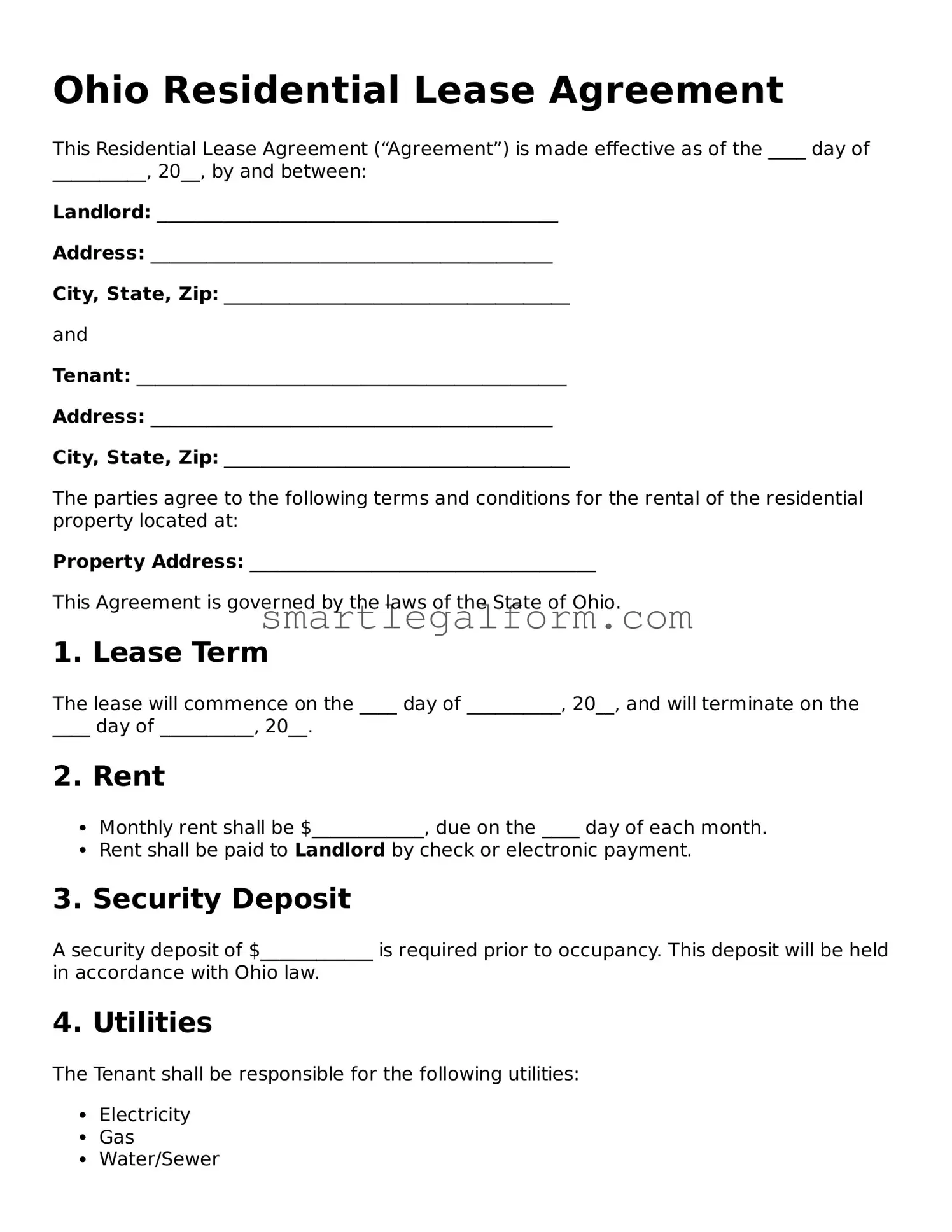Ohio Residential Lease Agreement
This Residential Lease Agreement (“Agreement”) is made effective as of the ____ day of __________, 20__, by and between:
Landlord: ___________________________________________
Address: ___________________________________________
City, State, Zip: _____________________________________
and
Tenant: ______________________________________________
Address: ___________________________________________
City, State, Zip: _____________________________________
The parties agree to the following terms and conditions for the rental of the residential property located at:
Property Address: _____________________________________
This Agreement is governed by the laws of the State of Ohio.
1. Lease Term
The lease will commence on the ____ day of __________, 20__, and will terminate on the ____ day of __________, 20__.
2. Rent
- Monthly rent shall be $____________, due on the ____ day of each month.
- Rent shall be paid to Landlord by check or electronic payment.
3. Security Deposit
A security deposit of $____________ is required prior to occupancy. This deposit will be held in accordance with Ohio law.
4. Utilities
The Tenant shall be responsible for the following utilities:
- Electricity
- Gas
- Water/Sewer
- Internet/Cable
5. Use of Property
The Tenant agrees to use the property solely as a private residence. No commercial activities are permitted.
6. Maintenance and Repairs
The Landlord will maintain the property in a habitable condition. The Tenant shall notify the Landlord of any needed repairs.
7. Termination
- Notice to terminate the lease must be given by either party at least 30 days prior to the intended end date.
- The Tenant must return the property in the same condition as received, minus normal wear and tear.
8. Additional Terms
Any additional terms or agreements must be documented in writing, signed by both parties, and attached to this Agreement.
9. Signatures
By signing below, the parties agree to abide by all terms outlined in this Residential Lease Agreement.
Landlord Signature: ____________________________
Date: _____________
Tenant Signature: ______________________________
Date: _____________
